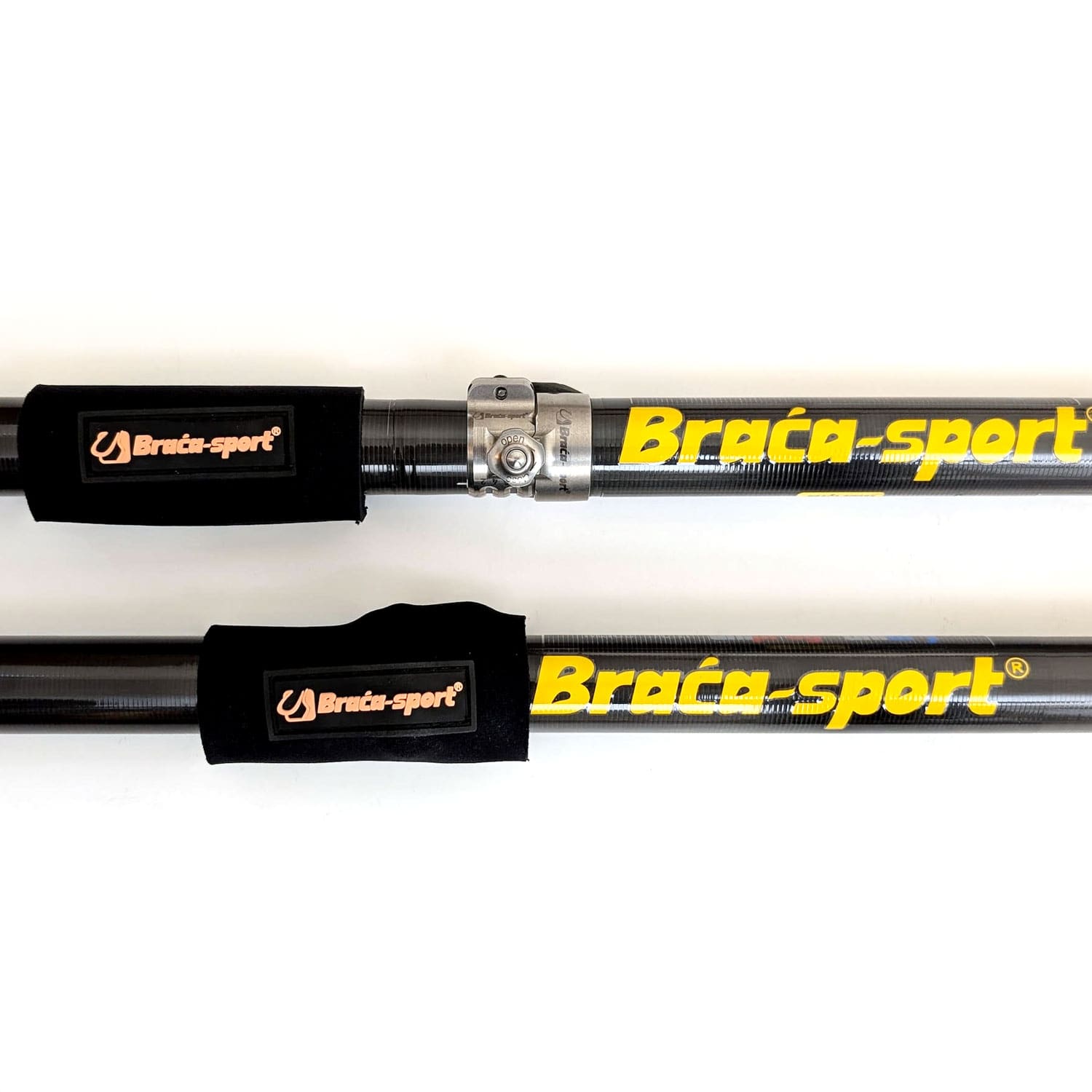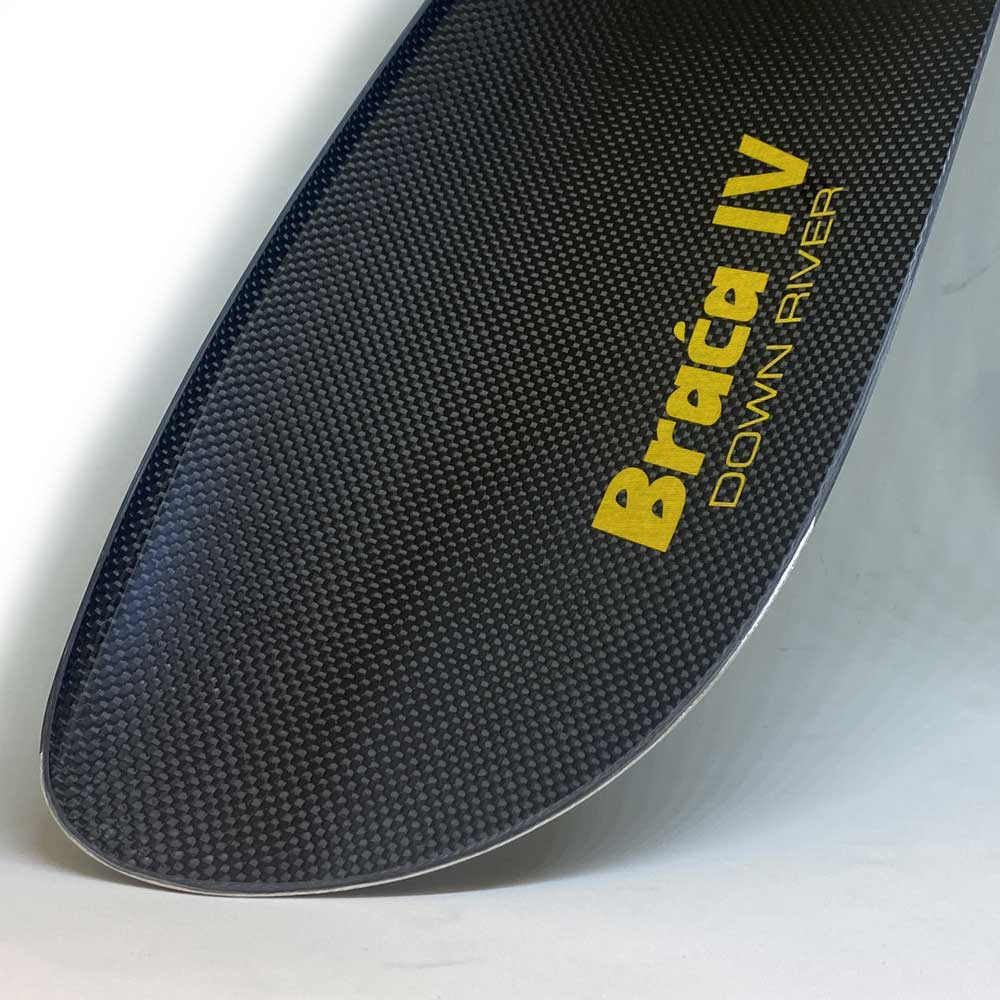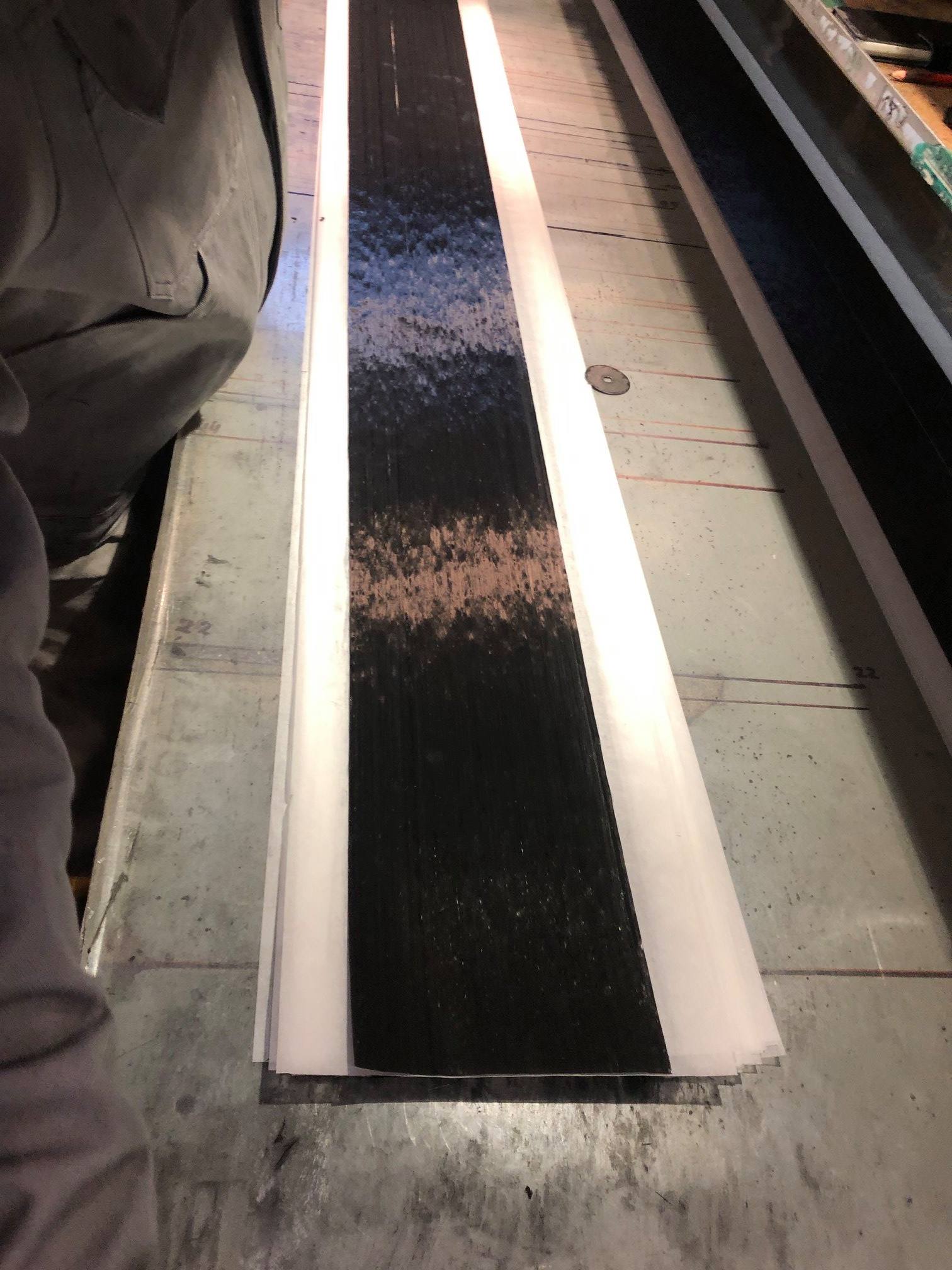Selecting Braca Carbon Shafts
Our shafts stand out uniquely in the industry, these are not industrial tubes! Braca shafts are meticulously woven for top-tier performance in every sport. With 30 years of expertise in manufacturing shafts to meet the design specs of each sport, we take pride in delivering unparalleled quality.
Braca-Sport offers a range of shaft options with different characteristics to suit the needs of various paddlers. Designed for Olympic and World events, Braca shafts cover the needs from short sprint to marathon and surfski. Braca shafts are custom fabricated for each type of paddle by Braca-sport in their Lithuanian factory.
Customization of your blade design, blade size, shaft, and paddle length is unique in the industry!
Shaft Nomenclature
Shafts are identified by a model number (#K) or by the amount of deflection in mm such as 3.2 mm. When you order you will see the selection of shafts that correspond to your blade choice. Since some shafts have a range of deflection we use the K number for ordering.
For example you might order: Braca XI 735 with a 19K shaft.
Braca Shafts
There is also an 18K Down river and a 10K for Carbon IV 60


How to Select a Shaft
Each paddle has a selection of available shafts. Your paddle selection will indicate available shafts, for example a Braca IV 60 blade only uses a 10K, 19K, or 21K. The recommended approach is to use stiff, well-made blades (such as Braca!) along with shafts that then provide the necessary flexibility.
- Our most popular configuration is the 19K for medium and long distances, marathon, surfski, fitness training.
- The majority of USA paddlers use flexible options like 19K and 21K, or stiffer alternatives like 06K and 17K
- Use a softer shaft for surfski, 19K or 21K, with plastic connectors for durability in salt water.
- For marathon, long distance, we recommend the 19K
- For sprinters, with their large blades, use the stiffest shafts, pros use most stiff, 02K, 03K, 04K. We also have super stiff 01K in stock upon request!
- All youth paddles have specifically designed shafts with more flex such as the 10K
- Down River paddles use the 18K shaft only
- Preventing an injury? Go as soft as possible and also consider soft blades such as Carbon 60
- 1-piece shafts available on request
How Deflection is Measured
Deflection is measured by hanging a weight from the shaft and measuring the deflection that occurs. Deflection is in mm and ranges from 1 to 6.5.

Shaft Stiffness Choice by Sport
Sprinters – 02k to 17k
Surfski – 19k, 21k — always with plastic locker for salt water
Marathon, Distance – 19k
Fitness – 17k, 19k, 21k — mostly 19k with plastic locker
Downriver – Down River blades use an 18K shaft with metal locker, specifically designed for down river conditions.
Shaft Choices by Stiffness Rating
Sprint shafts, 5 cm of adjustment, and metal lockers.
Stiffer
02K: Stiffness = 2.5 to 2.6 mm of deflection
03K: Stiffness = 2.7 to 2.8 mm of deflection
04K: Stiffness = 2.9 to 3.0 mm of deflection
06K: Stiffness = 3.1 to 3.2 mm of deflection
17K: Stiffness = 3.3 to 3.4 mm of deflection
Softer
Distance, Surfski, Fitness shafts with 10 cm of adjustment, and plastic/metal (19k) or only plastic locker (21k)
Stiffer
19K: Stiffness = Medium 3.2 – 3.6 mm of deflection
19K: Stiffness = Soft 4.5 -4.7 mm of deflection — ** This is the most selected shaft
21K: Stiffness = Medium 5.2 – 5.4 mm of deflection
21K Stiffness = Soft 6.1 – 6.3 mm of deflection (Smaller 28mm diameter)
Softer
Memory Lock Connector
We have a few of these newly designed shafts that hold your settings when paddle is taken apart.

Downriver Blades
These IV and XI blades have an even more rugged, specially designed, 18k shaft for downriver conditions

Why 19K and 21K Shafts Were Developed
Braca has had flexible hybrid shafts for a while, 05K and 09K, blend of fiberglass and carbon. Before the 19K and latest 21K these were the most flexible shafts they offered, with the 17K being the softest all carbon shaft. Feedback from the Surfski community spearheaded by Oscar was there was a need a softer all carbon shaft that was light and has a very fast recovery unlike the hybrid kevlar/fiberglass shafts. Braca came out with the 19K which was the softest all carbon shaft available with only a couple of the hybrid shafts overall softer. Year and half ago, Oscar visited the Braca factory for a week and half and worked with them on developing an even softer all carbon shaft, the 21K. Braca manufactures their own carbon fiber that they actually sell to many industries outside of kayaking, and also manufactures all their own shafts.
So to make the 21K super flexible, while keeping it 100% carbon to maintain the quick recovery, Braca had to make the diameter smaller, 28mm. This allowed them to get the flex they wanted, super fast recovery and still meet their durability spec. Really cool shaft if you have not tried. I (Chris C.) personally love it in the ocean.
Choosing Connectors
Shafts are available in a combination of metal and plastic connectors (lockers). Stiffer shafts are used with metal lockers and more flexible surfski shafts are used with plastic lockers. In the middle, the athlete can select metal or plastic for the 19K. Plastic lockers are lighter, extremely durable, have angle settings for feathering, and are more resistant to saltwater corrosion. The memory lock option holds your feather angle when dismantled and reconnected and is available for all shafts and is primarily geared for flatwater sprinters for whom angle is critical.
More Shaft Considerations
The stiffness of the shaft can impact the paddle’s performance. Some paddlers prefer a stiffer shaft for maximum power and efficiency, while others may prefer a bit more flexibility for distance and comfort.
Varied Water Conditions
When paddling in different water conditions, like the ocean or river, where you might need to speed up to catch waves, stabilize yourself (bracing), or navigate through moving water, it’s essential to choose the right paddle shaft. The softest shafts, 21K and 19K, are specifically made for these unpredictable conditions, but you can also consider using a 17K. It’s important to note that the 19K and 21K shafts come with plastic connectors, while all other shafts have metal connectors that are susceptible to salt water. If you’re using a paddle with metal connectors, make sure to disassemble and rinse them after each use, especially if you’ve been paddling in saltwater.
Injury Prevention or Accommodation
For paddlers wanting to take it easy on their joints and reduce the risk of injury then the more flexible shafts are indicated. Both the older and younger folks can benefit from using more flexible setups to reduce stress and add shock absorption. This shift helps the shaft absorb more of the stress and shock, taking some of the load off your joints. You might lose a tiny bit of power, but it’s hardly noticeable unless you’re a top-tier paddler doing short sprints. Youth paddles have their own flexible shafts to protect young joints.
Custom Manufactured for Your Sport in Lithuania by Braca!

Shafts Ready for Cutting
In house manufacturing of all shafts

Mandrils for Shafts
Details that create balance and performance

PrePreg Shafts
Material excellence

